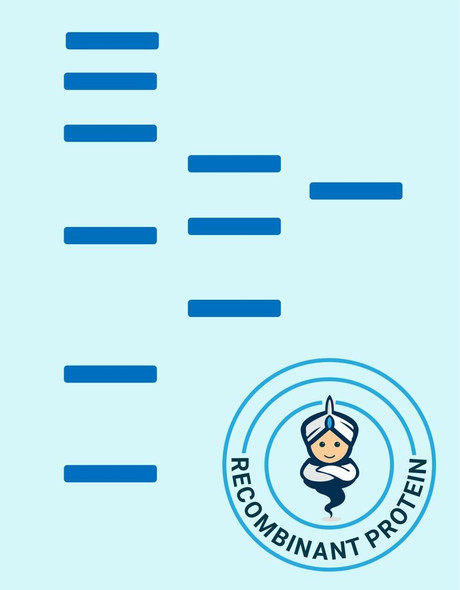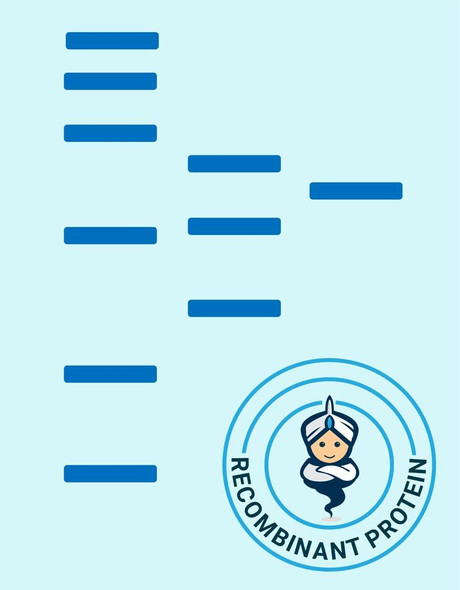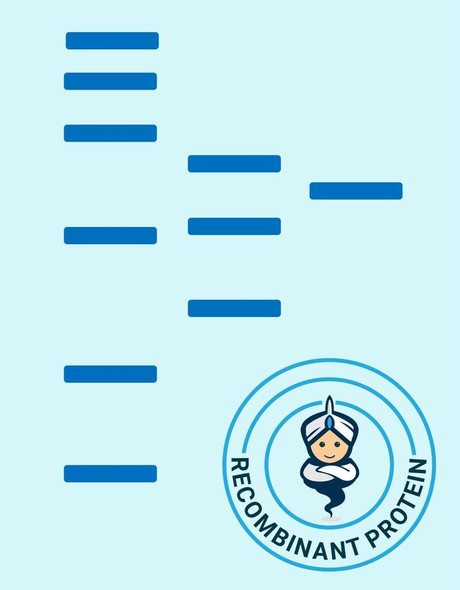Description
STMN2/STMN3/STMN4 Antibody (PACO18142)
The STMN2/STMN3/STMN4 Antibody (PAC018142) is a valuable tool for research involving stathmin family proteins STMN2, STMN3, and STMN4. This polyclonal antibody, produced in rabbits, is highly specific and reactive with human samples, making it suitable for a variety of applications including Western blotting and immunohistochemistry.The stathmin family proteins are involved in microtubule dynamics and are essential for cell division, migration, and signaling processes. By targeting these proteins, researchers can gain insights into the mechanisms underlying these cellular processes and their implications in various diseases such as cancer, neurodegenerative disorders, and developmental abnormalities.
The STMN2/STMN3/STMN4 Antibody enables the specific detection and analysis of these crucial proteins in different cell types, making it an invaluable tool for studies in molecular biology, cell biology, and drug discovery. Its high specificity and sensitivity make it a reliable choice for researchers looking to explore the functions and roles of STMN2, STMN3, and STMN4 in health and disease.
| Antibody Name: | STMN2/STMN3/STMN4 Antibody (PACO18142) |
| Antibody SKU: | PACO18142 |
| Size: | 50ul |
| Host Species: | Rabbit |
| Tested Applications: | ELISA, WB, IHC |
| Recommended Dilutions: | ELISA:1:1000-1:5000, WB:1:500-1:2000, IHC:1:50-1:200 |
| Species Reactivity: | Human, Mouse |
| Immunogen: | Synthetic peptide of human STMN2/STMN3/STMN4 |
| Form: | Liquid |
| Storage Buffer: | -20°C, pH7.4 PBS, 0.05% NaN3, 40% Glycerol |
| Purification Method: | Antigen affinity purification |
| Clonality: | Polyclonal |
| Isotype: | IgG |
| Conjugate: | Non-conjugated |
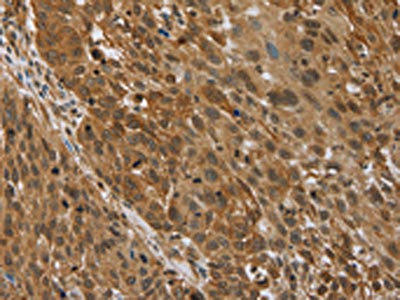 | The image on the left is immunohistochemistry of paraffin-embedded Human lung cancer tissue using PACO18142(STMN2/STMN3/STMN4 Antibody) at dilution 1/45, on the right is treated with synthetic peptide. (Original magnification: x200). |
 | Gel: 10+12%SDS-PAGE, Lysate: 30 μg, Lane: Human liver cancer tissue, Primary antibody: PACO18142(STMN2/STMN3/STMN4 Antibody) at dilution 1/450, Secondary antibody: Goat anti rabbit IgG at 1/8000 dilution, Exposure time: 1 minute. |
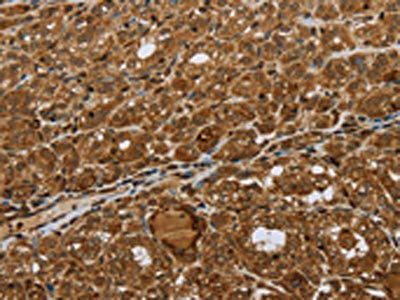 | The image on the left is immunohistochemistry of paraffin-embedded Human thyroid cancer tissue using PACO18142(STMN2/STMN3/STMN4 Antibody) at dilution 1/45, on the right is treated with synthetic peptide. (Original magnification: x200). |
| Background: | This gene encodes a member of the stathmin family of phosphoproteins. Stathmin proteins function in microtubule dynamics and signal transduction. The encoded protein plays a regulatory role in neuronal growth and is also thought to be involved in osteogenesis. Reductions in the expression of this gene have been associated with Down's syndrome and Alzheimer's disease. Alternatively spliced transcript variants have been observed for this gene. A pseudogene of this gene is located on the long arm of chromosome 6. |
| Synonyms: | stathmin-like 2/2/3 |
| UniProt Protein Function: | STMN2: a cytoskeletal protein that may play a role in neuronal differentiation, and in modulating membrane interaction with the cytoskeleton during neurite outgrowth. Associated with punctate structures in the perinuclear cytoplasm, axons, and growth cones of developing neurons. Neuron specific. |
| UniProt Protein Details: | Protein type:Cytoskeletal Chromosomal Location of Human Ortholog: 8q21.13 Cellular Component: cell soma; cytoplasm; growth cone; lamellipodium; neuron projection; perinuclear region of cytoplasm Molecular Function:calcium-dependent protein binding; protein binding; tubulin binding Biological Process: negative regulation of microtubule depolymerization; negative regulation of microtubule polymerization; positive regulation of microtubule depolymerization |
| NCBI Summary: | This gene encodes a member of the stathmin family of phosphoproteins. Stathmin proteins function in microtubule dynamics and signal transduction. The encoded protein plays a regulatory role in neuronal growth and is also thought to be involved in osteogenesis. Reductions in the expression of this gene have been associated with Down's syndrome and Alzheimer's disease. Alternatively spliced transcript variants have been observed for this gene. A pseudogene of this gene is located on the long arm of chromosome 6. [provided by RefSeq, Nov 2010] |
| UniProt Code: | Q93045 |
| NCBI GenInfo Identifier: | 51704330 |
| NCBI Gene ID: | 11075 |
| NCBI Accession: | Q93045.3 |
| UniProt Secondary Accession: | Q93045,O14952, Q6PK68, A8K9M2, G3V110, |
| UniProt Related Accession: | Q93045 |
| Molecular Weight: | 21,802 Da |
| NCBI Full Name: | Stathmin-2 |
| NCBI Synonym Full Names: | stathmin 2 |
| NCBI Official Symbol: | STMN2 |
| NCBI Official Synonym Symbols: | SCG10; SCGN10 |
| NCBI Protein Information: | stathmin-2 |
| UniProt Protein Name: | Stathmin-2 |
| UniProt Synonym Protein Names: | Superior cervical ganglion-10 protein; Protein SCG10 |
| Protein Family: | Stathmin |
| UniProt Gene Name: | STMN2 |
| UniProt Entry Name: | STMN2_HUMAN |












